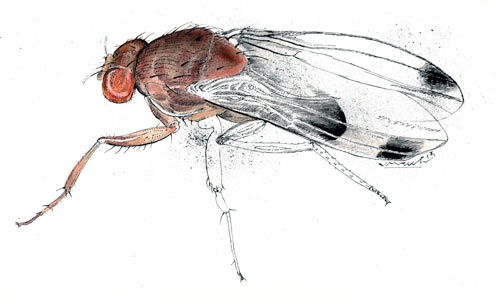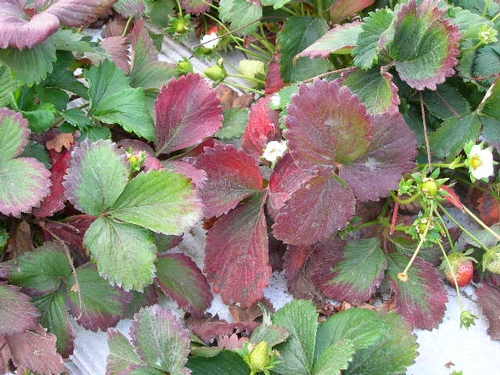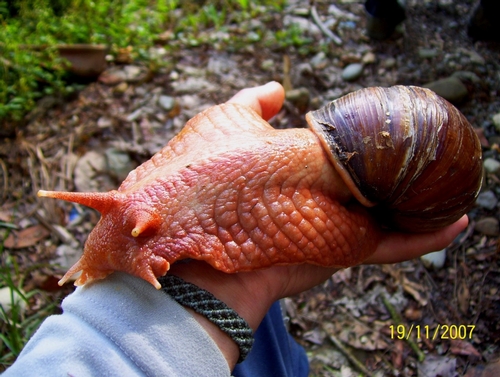Strawberries
Management Tips for Spotted Wing Drosophila on a Small Scale
I've been getting a number of calls lately concerning spotted wing drosophila in caneberries and strawberries, especially from growers on the smaller scale – in most cases organic operations.
Let's do a brief review what the best way to manage this will be:
One should take a two pronged approach. First the use of Entrust (spinosad) as a spray is recommended, while at the same time, to the extent possible, one should be removing the cull fruit (rots and over-ripes) from the field and burying them or throwing them away. For strawberry growers running the tractor over the culls in the furrow can be useful - not so much because it crushes the larvae, but because the flattened fruit dries out quickly and loses its property as a suitable food source. The spray is reducing the number of adults, while at the same time all routes of maturation are no longer available to the fly. Harvested fruit is removed and sold, and cull fruit is removed or destroyed, so there is no way for the larvae to complete their life cycle and turn into more flies.
That said, two years of research tells us to recognize that removal of cull fruit alone will not be enough to bring the population down to acceptable levels. There will always be the one fruit that is missed but yet contains the propagation potential in it to re-infest your field. That is why the best route for you is to spray along with practicing good sanitation.
Final word would be to take note of what is around your field. Are there any patches of uncontrolled spotted wing drosophila next door or wild blackberries? Both of these areas are serving as hosts and it will benefit you to get some control there also.
There is a pesticide mentioned in this article for control of spotted wing drosophila on the small scale. As always, before using such a pesticide, refer to the product label for directions on use.

Male spotted wing drosophila.
Exploring the Idea of Disease Suppressive Soils for Advances in Crop Health
One idea that is getting some play lately in the local scientific community is that of a disease suppressive soil. A disease suppressive soil is one in which specific soil pathogens no longer inflict accustomed levels of crop damage due to the inhibitory activities of other soil microbes.
Of note is that many of these microbes, generally bacteria and bacteria-like organisms, can be actively managed by the plant, which provide them, through the roots, with photosynthates thus influencing microbial activity and diversity. The net result is that this soil, very close around the roots in most cases, inhibits fungal pathogen invasion of the plant and is said to be a disease suppressive soil.
The question then to further understand this marvel of nature is what are the key species and genetic mechanisms of these microbes which result in the suppressive property of a soil? In other words, can we identify what makes a soil suppressive?
A few key points from "Deciphering the Rhizosphere Microbiome for Disease-Suppressive Bacteria", the ground-breaking paper in this field from the journal “Science” (attached below):
1. The soil investigated in this study was suppressive, but this only came about after years of being severely affected by the fungal pathogen, Rhizoctonia solani. Consistent with previous research, disease outbreaks are essential to get a suppressive soil – to gain immunity you have to get sick first.
2. Most suppressive soils lose their disease suppressive capability when pasteurized (in other words exposed to high temperatures; 80oC in this paper). Disease suppressiveness is transferable from a suppressive soil to a disease-conducive (non-suppressive) soil by mixing them together. These results indicate the microbial nature of the suppressiveness of the soil in this study.
3. An eye-popping 32,346 taxonomic units (classification groups) of bacteria and bacteria-like organisms were isolated from the soil associated with plant roots in this study. No significant differences in numbers of taxonomic units were noted between suppressive and conducive soils, nor were any differences noted in any of the blended mixes of the two.
4. However, and this is the key point, the study found that abundance of several bacterial taxa corresponded to suppressiveness of a soil. In other words, it's not so much the species of bacteria present which confers suppressiveness to a soil, it's actually the numbers of individuals of specific bacterial populations which confer suppressiveness or lack thereof to soil.
The findings in this paper are quite illuminating in that they state soil suppressiveness cannot be attributed to the presence or absence of a taxonomic group of bacteria, but can rather be attributed to the combined effect of a number of microbial groups working together in differing abundances.
Because of the tremendous potential such a technology could offer to agriculture, soil suppressiveness has been a bit of a holy grail for scientists. However, in my mind, the sort of interactive complexity described in this paper between possibly hundreds of microbial species, soil environment, plant roots and the pathogen needed to obtain satisfactory disease suppression will confound all but the most determined attempts at comprehension.
Hat tip to Stefanie Bourcier of Farm Fuel, Inc. for this paper, provided below:
Suppressive Soil Paper
A Primer on Nutrient Deficiency Symptoms and How to Address Them
Here is a really nice article from Robert Mikkelson with the International Plant Nutrition Institute (IPNI), great website overall actually.
The link below goes to the full article, but I'll capture a few highlights in a summary:
Plant nutrient deficiency symptoms appear when a nutrient is lacking, but this can have multiple causes. It can be because root activity is low because of soil saturation and low temperatures, or it can be poor uptake from disease or mechanically damaged roots. And of course low nutrient supplying power on the part of the soil can be part of the equation as well. The field practitioner needs to get the full picture.
Deficient plants do not initially show any signs of nutrient shortage other than growing slower and having an more uneven, lower yield. At the point that deficiency symptoms become visible, the crop is already severely stressed and although it's already quite late to do so, steps must be taken to correct the deficiency. This is an important point, and definitely part of the reason I constantly push for growers and agricultural professionals to be taking tissue samples at several points through the season to catch deficiencies and problems before they deal irreversible damage to the crop.
Speaking of those tissue samples, take tissue samples from healthy areas at the same time you take samples from the deficient areas (I take two of each at a minimum). That way you can compare the two areas and more easily identify what is deficient. It's also useful to take soil samples from those same healthy and deficient areas at the same time of tissue samples in order to get a fuller view of what is going on.
Here's the link, Dr. Mikkelson does a way better job of explaining this than I do:

Severely purpled leaves on Albion. What's the deal here?
Soil Disinfestation Update Meeting Announcement - August 19
The public is invited to join strawberry and caneberry growers to learn the latest news about Anaerobic Soil Disinfestation (ASD) on Tuesday, August 19, 8:15 am to 11:30 am at the Auditorium of Santa Cruz County Cooperative Extension (UCCE), 1432 Freedom Blvd, Watsonville, CA 95076. Spanish translation will be provided.
Watsonville firm Farm Fuel Inc. will present an educational program on the most recent science and application methods for ASD. Featured speakers are Farm Services Manager Jonathan Winslow, Farm Advisor, Strawberries & Caneberries Mark Bolda, and UCSC researchers Joji Murimoto and Dr. Carol Shennan, who will provide background on their ten years of ASD research. Grower Manuel Mercado, who hosted a large-scale demonstration site for the 2013 DPR-funded grant, will also provide insights from his experience.
See you there!
Shipment of Giant Land Snails Siezed at LAX
Lest we forget how valuable the customs procedures are at our ports of entry, look at this article from abc news:
http://abcnews.go.com/Weird/wireStory/giant-african-snails-seized-los-angeles-airport-24556879
These giant African land snails (article doesn't say, but very likely a species of the genus Achatina) are enormous, and can get up to 2 lbs in weight and according to the article are "seriously harmful" because they "eat any kind of crop they can get to". Good thing this shipment was stopped at the airport and came no further into our state, because quite frankly we aren't even close to having the tools to controlling these in an agricultural setting.

Giant African land snail. Imagine trying to manage something like this!

